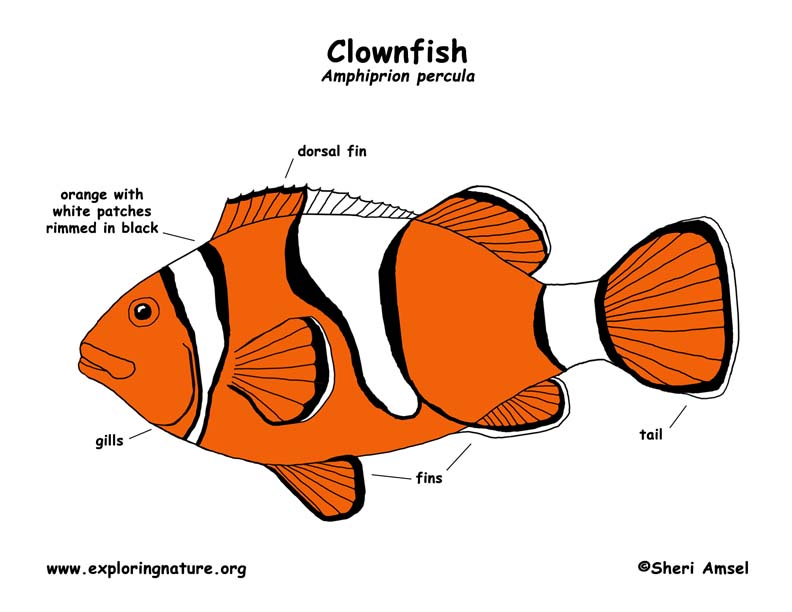

They are found in the tropical waters of the Pacific Ocean, the Red Sea, the Indian Ocean, and the Great Barrier Reef off the coast of Australia.
They live among the tentacles of sea anemones on coral reefs on the ocean floor.
They are small (2-5 inch long), bright orange fish with white patches bordered in black.
They live in pairs staying in the protective cover of the poisonous arms of sea anemones. They are immune to the deadly sting of the anemones.
They work with the anemone to get food. They swim out onto the coral reef to attract other fish with their bright colors and lure them into the stinging arms of the anemone. Then after the anemone eats them, the clownfish eats what's left over. They also eat plankton, algae and other small things they can find on the reef, including dead parts of their own anemones.
They lay their eggs year round on nearby coral. The male clownfish guards them until they hatch. They hatch in less than a week. Some males guard the babies too.
Kingdom: Animalia
Phylum: Chordata
Subphylum: Vertebrata
Class: Actinopterygii
Order: Perciformes
Suborder: Labroidei
Family: Pomacentridae
Genus: Amphiprion
Species: A. percula
When you research information you must cite the reference. Citing for websites is different from citing from books, magazines and periodicals. The style of citing shown here is from the MLA Style Citations (Modern Language Association).
When citing a WEBSITE the general format is as follows.
Author Last Name, First Name(s). "Title: Subtitle of Part of Web Page, if appropriate." Title: Subtitle: Section of Page if appropriate. Sponsoring/Publishing Agency, If Given. Additional significant descriptive information. Date of Electronic Publication or other Date, such as Last Updated. Day Month Year of access < URL >.
Amsel, Sheri. "Clownfish" Exploring Nature Educational Resource ©2005-2024. December 13, 2024
< http://www.exploringnature.org/db/view/Clownfish >

